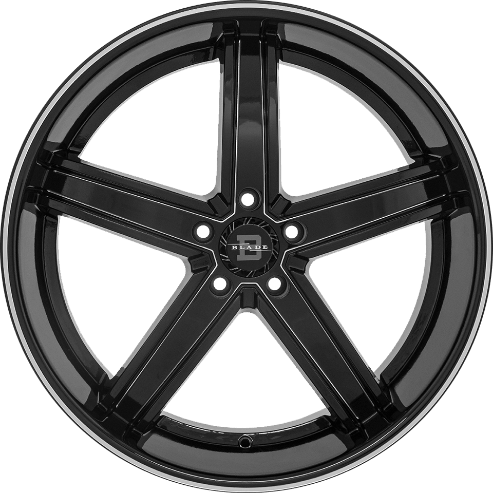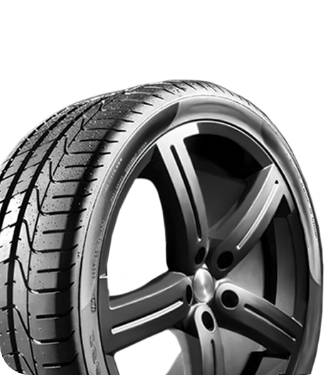

Tips To Prepare Your Tires for Winter Driving
Safety Tips |Winter is coming, and all drivers must start preparing. This season brings a unique set of challenges, especially on the road. While you might focus on checking your car’s engine or stocking up on windshield washer fluid, you can’t overlook the importance of winter tire preparedness and maintenance. We’ll explain the challenges winter brings and offer some insightful tips to prepare your tires for winter driving.
How Cold Weather Affects Tires
Cold weather can significantly affect your tires; low temperatures decrease tire pressure. Typically, it drops one pound per square inch (PSI) for every 10 degrees Fahrenheit decrease. Underinflated tires struggle to grip the road, raising the risk of accidents. Cold temperatures also make tire rubber less flexible, increasing the likelihood of cracking.
To avoid dealing with flats or blowouts in freezing conditions, you should understand how cold weather impacts tire performance. Low pressure raises rolling resistance, forcing the engine to work harder and potentially increasing fuel consumption. It also leads to uneven tire wear and shortens tire lifespan.
Conducting a Thorough Tire Inspection
Before the first snowflake hits the ground, inspect your vehicle’s tires thoroughly. Start by examining the tread depth. The tread helps tires grip the road, and it’s especially important in winter when roads can be slippery. The last thing drivers want is to travel on slick roads with bald tires! If the tread is thin, you should replace the tires immediately.
Next, inspect the tires for any signs of wear or damage, including cracks, bulges, or cuts on the tire surface. They could indicate tire failure, so get new tires or winter tires.
Understanding Tread Depth
Tread depth is crucial for maintaining traction on wet or snowy roads. Tires with inadequate tread depth can increase stopping distances and reduce your ability to control the vehicle. Most mechanics will recommend a minimum tread depth of 4/32 inches for winter driving.
This depth allows your tires to channel water and slush away, reducing the risk of hydroplaning. Regularly measuring tread depth can help you determine when it’s time for new tires so that your car can handle whatever winter throws your way.

Identifying Tire Wear Patterns
Uneven tire wear can lead to poor handling and reduced tire life. Common wear patterns include edge wear, center wear, and patchy wear. Each pattern can indicate different issues, such as improper inflation or misalignment. By identifying and addressing these patterns before winter is upon us, you can optimize your vehicle’s performance and extend tire lifespan.
Choosing Winter Tires
If your car has all-season tires, consider switching to winter tires before the temperatures drop and the snow falls. Winter tires are ideal for wintry conditions due to their deep treads and soft rubber compounds that enhance traction. They are must-haves for anyone driving on snowy or icy roads.
All-season tires might be sufficient if you live in a region with mild winters. These tires provide adequate traction in light snow while performing well in warm weather. However, they won’t provide the same level of grip as winter tires.
Studded vs. Non-Studded Winter Tires
When choosing winter tires, you have the option of studded or non-studded varieties. Studded tires provide superior traction on icy roads due to the metal studs that grip the surface, making them ideal for extremely harsh winter conditions. However, they’re noisy and may damage dry pavement, which is why some municipalities restrict their use to preserve the roads.
Non-studded winter tires, on the other hand, use special rubber compounds and tread patterns to enhance grip without the added noise and potential road damage. While they may not offer the same traction on ice, non-studded tires perform well in snow.
Essential Tire Care Tips for Winter
To prepare your tires for winter driving, here are some tips to keep in mind. First, inflate them to the manufacturer’s recommended PSI; underinflated tires can lead to poor handling and increased wear. Also, check the tire pressure regularly as temperatures fluctuate.
Second, keep up with your vehicle’s service schedule regarding tire rotations. Finally, wheel alignment supports even, gradual tread wear.
The Importance of Tire Rotation
Regular tire rotation distributes wear evenly across all tires so that they wear out at the same rate. This can improve handling, extend tire life, and provide a smoother ride. By following your vehicle manufacturer’s rotation schedule, you can maximize the performance and lifespan of the tires!
Wheel Alignment and Balance
Wheel alignment and balance are crucial for maintaining vehicle stability and tire health. Misaligned wheels can cause uneven tire wear and poor handling. Regularly checking and adjusting alignment can prevent these issues and keep your vehicle running smoothly.
Preparing for Winter Emergencies
Even with preparation, winter driving can be unpredictable. Have an emergency kit in your vehicle, and include the following items:
- Tire repair kit
- Jumper cables
- Flashlight
- Warm clothing
- A blanket
- Tire chains
- First aid kit
Having a plan in place for winter emergencies can provide peace of mind and ensure you’re ready for any situation. Familiarize yourself with changing a tire and using your emergency equipment so you’re prepared in case of a roadside emergency.

How To Apply Tire Chains
If you get a lot of snowfall in your area, consider getting tire chains, also known as snow chains. They fit around the tires to increase traction on snow and ice-covered roads. They consist of metal links that grip the road, reducing the likelihood of slipping and skidding.
To use tire chains, check that they are the correct size for your tires. Place the chains on the ground next to the driving wheels, and spread them out to remove twists. Then, drape the chains over the top of your tires and center them. Move the vehicle slightly to pull the chains fully onto the tires. They should fit snugly before fastening and securing them with the provided hooks or straps.
Prepare Your Car and Tires for Winter at RNR Tire Express
With these tips in mind, you can handle whatever winter weather comes your way. Whether you need winter tires, a tire repair kit, or tire maintenance services, RNR Tire Express is here to help!
Our team of tire experts can make it easy to find tires in Tucson, Arizona that will overcome the challenges of winter. Browse our inventory of tires online, or schedule an appointment at one of our tire shops today!





